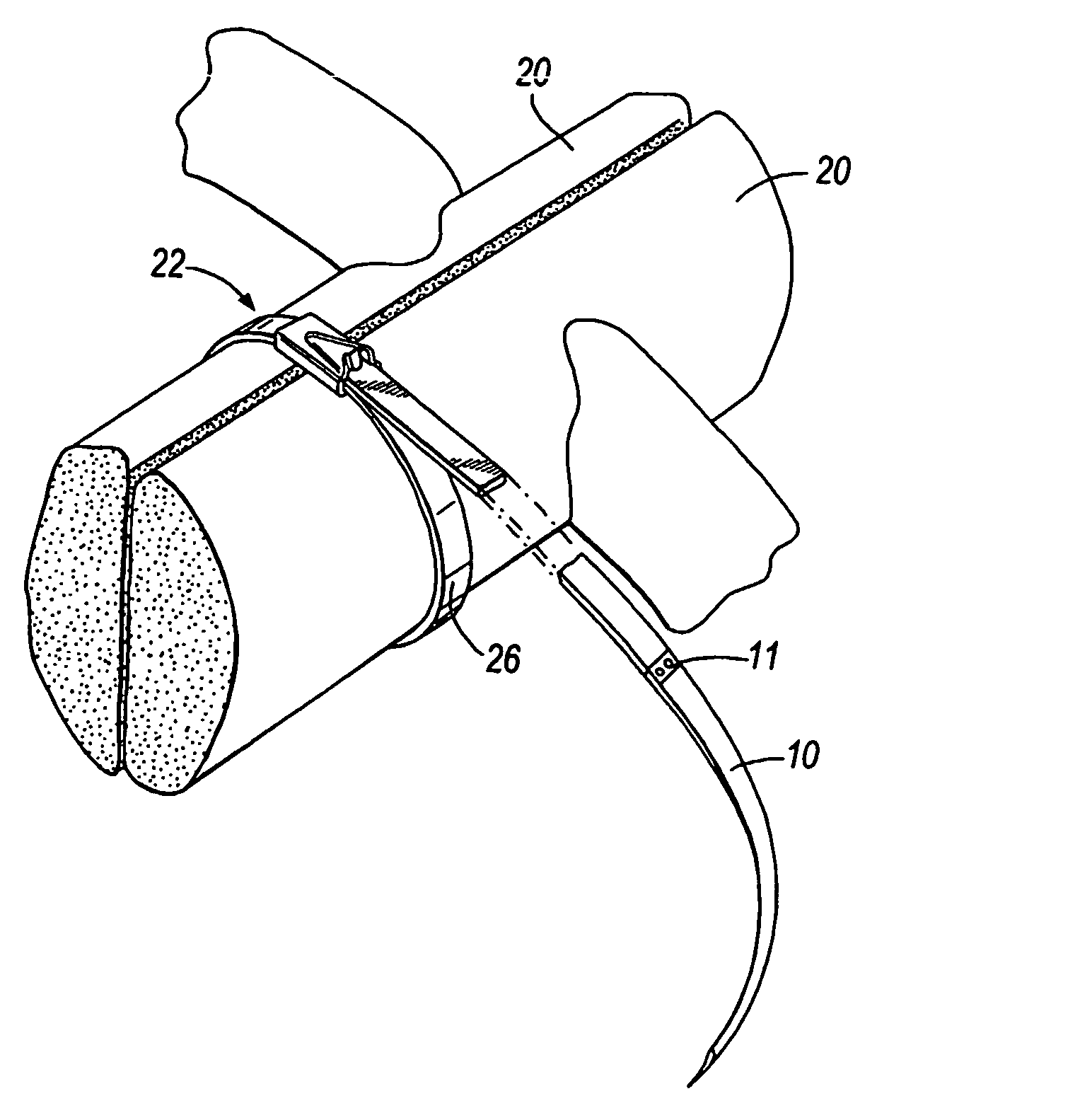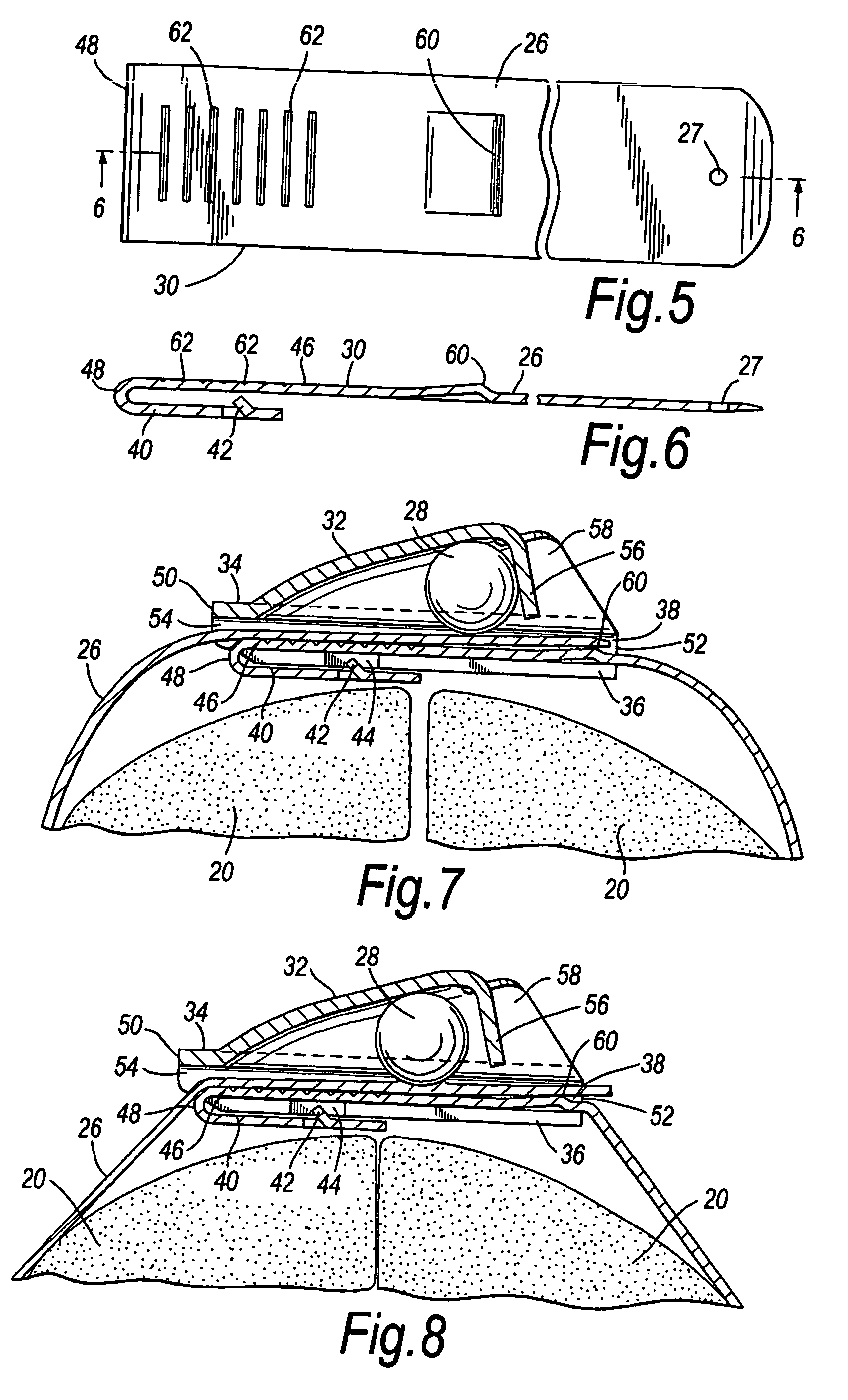Suture band
a technology of suture banding and assembly, which is applied in the field of suture banding assembly, can solve the problems of needle being driven through the sternum, difficult to place wires, and complicated tasks, and achieve the effect of reducing the discomfor
- Summary
- Abstract
- Description
- Claims
- Application Information
AI Technical Summary
Benefits of technology
Problems solved by technology
Method used
Image
Examples
Embodiment Construction
[0035] Referring now to the drawings, a first embodiment of a suture band for encircling divided bone tissue, such as the sternum 20, is generally indicated in FIG. 1 by reference character 22. The suture band is terminated at one end by a needle 10 which is attached to the end of the strap at a fixture point 11. The full length of the strap is not shown but is indicated by the hash lines in FIG. 1. Suture band 22 includes a locking head 24, an elongate strap 26 extending from the strap, and wedging means in the form of a ball or sphere 28, best shown in FIGS. 7 and 8, for retaining the strap within the locking head. Preferably the ball, head and strap are formed of stainless steel to give the suture band high strength and excellent resistance to corrosion. The ball 28 preferably has a roughened surface to ensure that it wedges securely.
[0036] The suture band of the present invention is formed by assembling a partial locking head 24′, shown in FIGS. 2-4, and the strap 26 and a hook...
PUM
 Login to View More
Login to View More Abstract
Description
Claims
Application Information
 Login to View More
Login to View More - R&D
- Intellectual Property
- Life Sciences
- Materials
- Tech Scout
- Unparalleled Data Quality
- Higher Quality Content
- 60% Fewer Hallucinations
Browse by: Latest US Patents, China's latest patents, Technical Efficacy Thesaurus, Application Domain, Technology Topic, Popular Technical Reports.
© 2025 PatSnap. All rights reserved.Legal|Privacy policy|Modern Slavery Act Transparency Statement|Sitemap|About US| Contact US: help@patsnap.com



